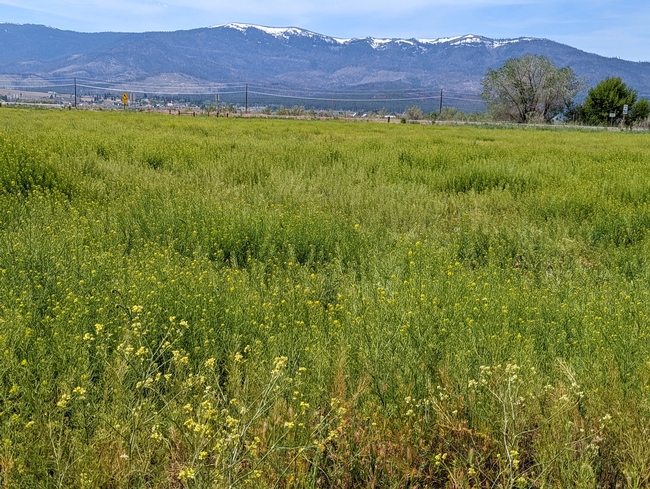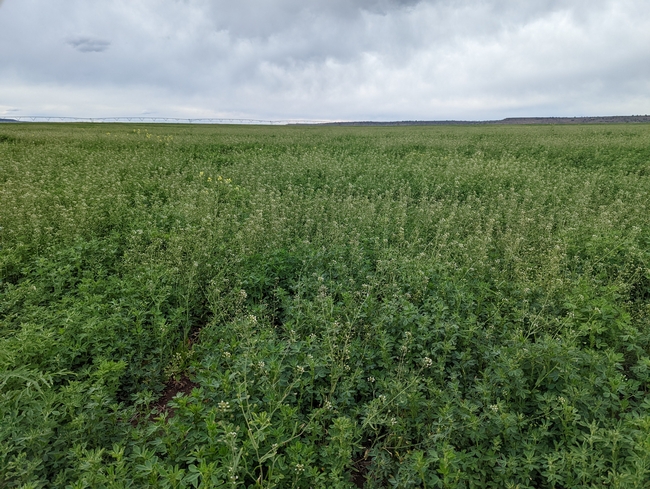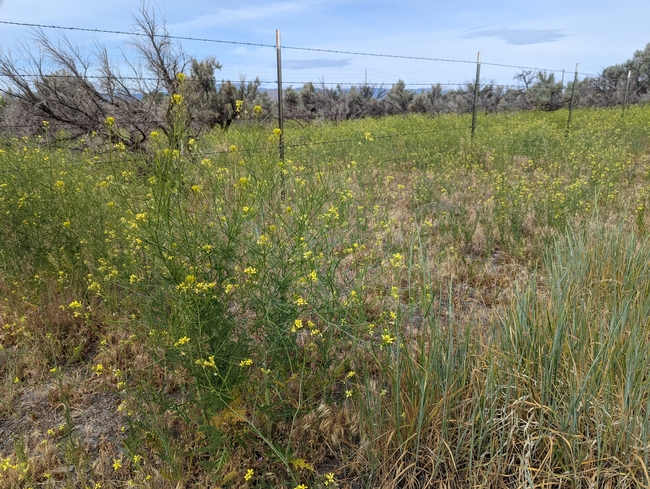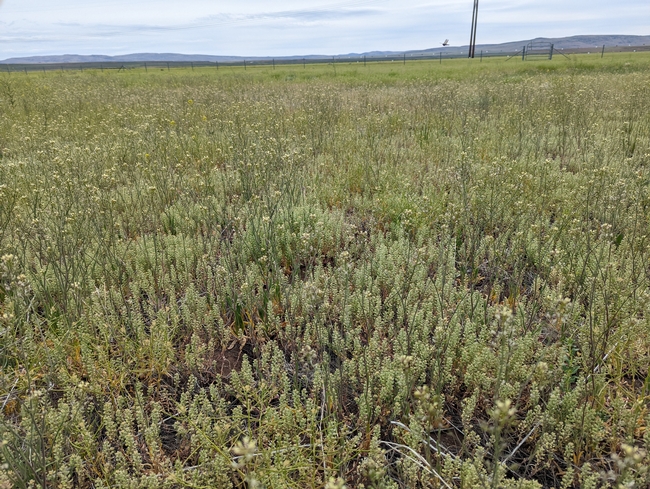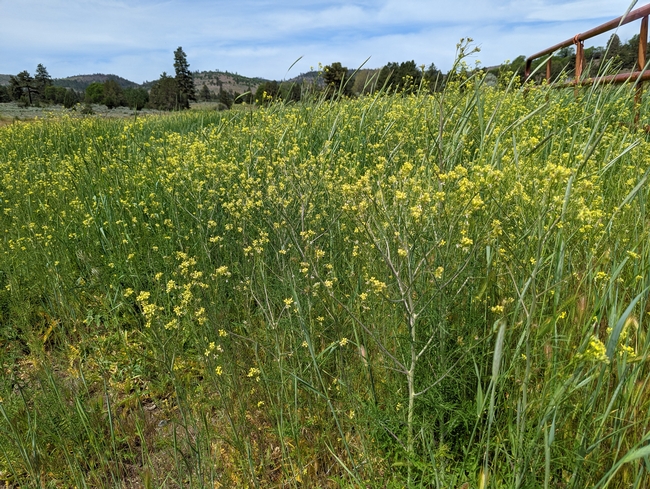What is your favorite condiment for a Memorial Day brat? My childhood friend, with family roots in Wisconsin, told me there is only one choice.... mustard! And mustard flowers certainly have painted the landscape the intermountain region this year. Yellow flowers of all shades blooming in pastures, rangelands and hayfields are making their presence felt!
Photo One:A few tumble mustard plants in the foreground, with a monoculture of flixweed in dryland pasture in the background.
Over the past six springs, I've lived in northeast California winter annual mustards grow consistently with some years being worse than others. Alfalfa fields often are infested with shepard's purse, flixweed, and tumble mustard. Dryland pastures commonly have with patches of these plants here and there, especially taking foothold in disturbed areas. They've always had a presence, but typically not like the spring of 2022. I guess that's what 2-6 inches of rain in late October will do, promoting a massive germination of the winter annual mustard seed bank. There are now mats of plants where only a few stems may have been present in past years.
There are many winter annual mustards among various genus' I regularly see; Small seed false flax (Camelina macrocarpa) in drylands, spreading wall flower in sagebrush country (Erysimum repandum), flixweed (Descurainia Sophia), and tumble mustard (Sisymbrium altissimum ) in irrigated and unirrigated ground, with shepard's purse (Capsella bursa-pastoris) taking root in sidewalk cracks and growing intermixed with hay.
Photo Two: Alfalfa Field in Modoc County, infested with shepard's purse and one tumble mustard. Many of our hay fields are full of winter annual mustards this year. On a normal hay yield weedy hay bring a far lower value, than hay infested with weeds.
All of these plants are non-native guests from Eurasia and beyond, which have made their home and presence felt this year in North Eastern California. They do not provide desirable forage, and take the place of crops and desirable rangeland forage species alike. In certain instances species like flixweed and tumble mustard have even been linked to livestock poisoning. Some can also dry down becoming fine fuels, and tumbling their way to stick up against fences. Generally they are just considered undesirable weedy species that take up space.
All have shades of yellow flowers, except for shepard's purse which dons white petals, and heart shaped seed pods separating it from the rest. Pale yellow flowers accompany small seed false flax, with ovate seed pods. Flixweed's leaves are comparatively distinct, as they are frilly/ dissected, with yellow flowers and tubular seed pods. Longer cylindrical seed pods are found on tumble mustard and spreading wall flower, with the latter being differentiated with a much shorter less erect growth habit.
Photo Three: Tumble mustard and cheatgrass invading the understory of a sagebrush ecosystem. When dry this will produce a fine fuel bed ready to interconnect the overstory vegetation.
While always around this year the abundant blooms are a testament to the tremendous seedbanks that lay dormant just waiting for a big fall rain. Tumble mustard seeds can last for 10 years in the soil seed bank, but seeds in storage in jars have germinated readily after 40 years of storage. Shepard's purse seeds are described as “persistent” in the literature, quite impressive for such a small seeded species. All of their seeds are tiny, and yellow, hence the sayings “small as a mustard seed!”. Individual plants can range from producing a few thousand seeds to over 100,000 if resources are available. Regardless a dense infestation may result in 10's of millions of seeds produced all with the potential for persistence. While our fields may not be painted yellow next year, our seed bank will be built high ready for the next year with good fall moisture.
I hope you had an enjoyable Memorial Day celebration last Monday, and had some mustard and onions (or maybe even ketchup) on that brat!
Photo Four: Field of spreading wallflower, with a stem of flixweed and couple of small seeded false flax plants towering above. This infestation was over 100 acres.
Photo Five: Small seed false flax stand with an understory of desert alyssum (another mustard species not mentioned in the post!)
Photo Six:Tumble mustard and rye on edge of pasture in Lassen County.
